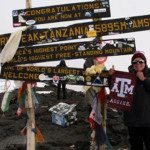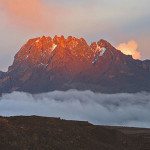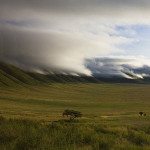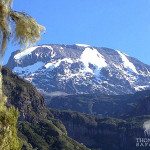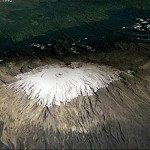The entire trek up Kili is filled with unforgettable sights. Traveling from the rolling lowlands, through dense rainforest, onto a barren heath, and upwards through the alpine desert to the frigid, arctic summit zone makes for pretty varied scenery, after all.
But one particular formation has been fascinating and awing climbers for decades, now: Lava Tower.
 Photo by Thomson Safaris staffer, Michael Moitoso
Photo by Thomson Safaris staffer, Michael Moitoso
–
Located a little over 15,000’ up the mountain along the Lemosho and Machame routes, Lava Tower is a large rock formation that (you guessed it) was formed from lava, back in the days when Kilimanjaro was still an active volcano (though Kili is dormant these days, and hasn’t had a major eruption in around 150,000 years, fumaroles near the summit crater still emit gases, and there was volcanic activity on the mountain just 200 years ago).
Lava Tower is what’s known as a volcanic plug; at some point in the distant past, lava shot out a vent at the base of where Lava Tower now stands, cooled, and hardened, thus stopping up the vent beneath. On active volcanoes, plugs like these can increase pressure below the surface, leading to more explosive eruptions, but so far, even with this geological “cork” stuck in its side, Kili’s stayed quiet.
The tower is around 300 feet tall, and previously, climbers were able to hike up it (a scramble that could be treacherous on icy days). Because of safety concerns, officials banned trekkers from climbing Lava Tower earlier this year, but according to folks who were lucky enough to have made the trip before the ban, the views of Uhuru Peak from the top are truly remarkable.
But that doesn’t mean trekkers won’t get to experience this towering example of Kili’s geologic history; Lava Tower Camp, located at the base of the formation and used by trekkers on Thomson Safaris’ Western Approach Route, allows you to sleep in the shadows of Kili’s eruptive past.

